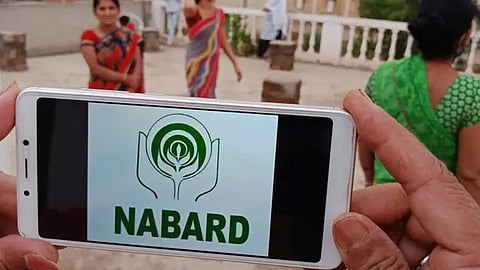The Internet penetration in India stands at 47 per cent, with 34 million users added between 2021 and 2022. According to a report by Deloitte, India is poised to have one billion smartphone users by 2026. India already has 1.2 billion mobile subscribers, and of that, 750 million are smartphone users.
Neobanks Could Be Answer To India’s Financial Inclusion Goals
Given the acceleration of the Internet and the growth and adoption of smartphone across urban and rural India, Neobanks could prove to be the ideal solution towards achieving financial inclusion in India
No, this is not an article about digital India. However, these numbers are significant, as they clearly indicate that the Internet is where a lot of things happen – from entertainment, education, healthcare, shopping, marriage, love and even buying homes. In fact, one would think that if you have bandwidth and a mobile in your hand, you can travel the world without having to visit a bank, a shop, or an airline office. Yes, the Internet and the mobile phone are ubiquitous.
Does banking fit into this mix? Digital banking has undoubtedly transformed the way we bank; however, in a large and diverse country like India, the perception of a bank is still a brick and mortar structure, where it takes hours and many forms and complicated processes to even open a bank account. In conventional banks, the customer experience is also one that doesn’t engender trust or loyalty to the bank.
Digital banking in urban India may have become quite common, and perhaps is also taken for granted, but a large number of Indians are still unbanked or underserved. According to the Global Findex Report of 2017, India has the second largest unbanked population at 190 million people. Even though schemes such as the Pradhan Mantri Jan Dhan Yojana (PMJDY) has managed to create bank accounts, the number of bank accounts as of October 2021 stands at 435.7 million. Merely having a bank account does not automatically translate into financial inclusion.
Conventional Banking Challenges In Financial Inclusion
Financial literacy, including the knowledge of banking services as well as having an open mind and positive attitude towards banking services, such as access to loans, easy withdrawals, transfer of money and more, still has some ways to go.
At least 52 per cent of respondents to the All India Rural Financial Inclusion Survey 2016-17 conducted by NABARD preferred keeping their savings at home. Many rural people who opened bank accounts under the PMJDY have not conducted any transactions beyond the initial one or two, because questions such as “zero balance” or even an “overdraft” facility have not elicited satisfactory explanations, leading to a mistrust of banking services and “inoperative accounts”.

Banks do not find it economically viable to set up branches in remote regions with sparse populations. In order to overcome some of these challenges, banks have adopted the omni-channel approach with a mix of digital banking with ATM kiosks and offline banking, to offer a range of products and services.
Despite several efforts and initiatives by the Reserve Bank of India (RBI), nationalised banks, and financial institutions, financial inclusion still remains elusive for many, simply because of lack of access.
Neobanks Could Move The Needle Towards Financial Inclusion
With the novel concept of online-only, Neobanks are disrupting traditional financial services by leveraging technology that gives greater access at zero cost to the customer. Neobanks are going where no other conventional bank branch finds its way, thus helping people receive regular banking services, from account opening to withdrawals, transfers, loan access, checking bank balance, and even investments – Neobanks are offering all.
When a business correspondent demonstrates the functionalities of a Neobank, using his phone, a farm labourer, Kumari, earning just about Rs 250 per day, in a distant village in UP, can ask questions, get answers, and see how Neobanks function in real-time.
Being aware of what’s available, and what can be done with banking is half the battle won, especially in a country where financial literacy has been in deficit.
Imagine a migrant labourer’s wife, managing her home and her small plot of land alone, with her children. If she doesn’t have to walk miles to the nearest accessible and available kiosk to pay utility payments, but can access her Neobank app to do so, or can refer someone in her community about the ease of opening a bank account in minutes, rather than having to first walk to the nearest bank branch, fill up forms, and then wait for the completion of the process, then it’s a clear validation of how technology can be leveraged effectively for banking service delivery.
A Neobank has the advantage that traditional banks don’t – they can customise their service offering with speed and agility. Traditional banks take time to pivot their technology to service their customers, especially in remote geographies. For the end-customer, when they see that there are products and services tailored to suit their needs that they don’t really need to confront rude bank staff and don’t even have to pay for many of the services, be it zero balance facility, or maybe an overdraft facility, they lean towards simplicity, ease, and speed, combined with technology – yes, the Neobank can, and in many cases, is already the bank of choice for the underserved or the unbanked.

While the advantages of Neobanks far outweigh traditional banks, it could take a while for Neobanks to replace traditional banks, since it is tech-driven, and may be constrained to cater to the needs of non-tech savvy segments of the population.
But given the rapidity of smart phone user growth in the country, and the acceleration of digital adoption driven by rural India – clocking at a healthy 13 per cent, and the mobile phone being the device of choice – Neobanks could definitely be the vehicle to deliver financial inclusion in the near term.
The author is CEO and co-founder of FIA Global
(Disclaimer: Views expressed are the author’s own, and Outlook Money does not necessarily subscribe to them. Outlook Money shall not be responsible for any damage caused to any person/organisation directly or indirectly.)